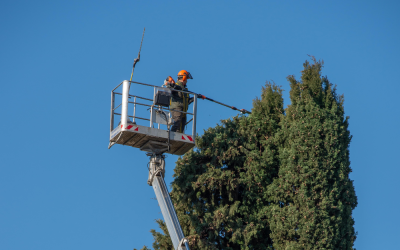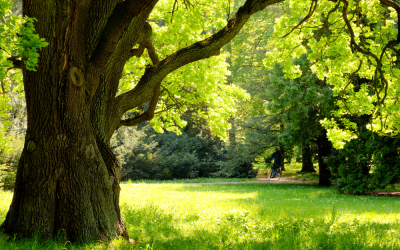While trees remain a beautiful part of the natural world, it’s easy to forget that some trees can grow to weight as much as 6,000 tons when they reach full majority. While trees this large do not grow in the UK, even a small hardwood tree can weigh as much as 10 tons – so, it’s always important to learn how to recognise an unsafe tree to prevent yourself from becoming stuck beneath one.
How to recognise an unsafe tree? An unsafe tree may have a large number of protruding roots and dead branches; is leaning towards the east (as most wind comes from the west) or has thin leaf cover among many other symptoms. A professional inspection is always recommended.
Signs of an unsafe tree
- Visible roots are not always an issue. However, if the number of roots protruding above the surface is higher than normal, this can be a sign that the tree is finding it hard to secure its position. A lack of deep roots makes the tree especially vulnerable to weather damage as a storm could easily rip the tree from the ground.
- An obvious indicator of an unsafe tree is an alarming number of dead branches. Many times, a tree can simply need pruning as its resources are being spread over a volume of mass that cannot be supported. Sometimes though, excessive dead branches can mean that the tree is losing nutrients and could be ill, or dying. In these situations, you may notice that the ends of the branches are the first to suffer.
- Tress often lean in the wind, but more often than not always returns to its normal position. But there are, unfortunately, many areas in the UK where a lack of cover leaves the tree at the mercy of the elements. In these areas, high wind speeds from the same direction – more often than not, the west – can continue to push a tree in the opposite direction until it is uprooted.
- Excessive fungal growth on the trunk or roots of the tree can be a sign that there is a presence of rot, as fungus feeds on the breakdown of this biological matter – weakening the structure of the tree.
- If the tree has large cavities in the trunk, this can undermine the structural integrity of the tree.
- If you see find sawdust on the ground around the tree, this can be an indication of an unwanted infestation such as termites, beetles or ants.
- Trees with a split main trunk are usually fine as long as the joint is u-shaped. If, however, the joint is v-shaped, this opens the tree up to damage by weathering if the trunk splits completely.
- Missing bark, cracks or splits can be an indication of a tree that is suffering.
What to do with an unsafe tree
Once you’ve learned how to recognise an unsafe tree, you can call in the professionals to fix the problem. Tree surgery is a very dangerous job, and often requires an individual to climb high into the branches with dangerous equipment to complete it. It is never recommended to undertake such work by yourself due to the risk of injury, damage, or even death.
There have been, over the years, a large number of deaths attributed to unsafe trees on roadways, in gardens, and in the workplace. It is therefore advisable to get any trees in these locations checked by a professional at least every three years to show that you have taken all necessary precautions to keep the public safe.
Trees are a beautiful addition to any landscape or garden, so why not help them stay that way by taking care of them and ensuring they live a long and healthy life?
Are you in need of help with trees or hedges in your garden? Based in Manchester with over 30 years’ combined experience, Elm House Tree Services are qualified specialists who offer competitive prices combined with reliable, friendly customer support.



